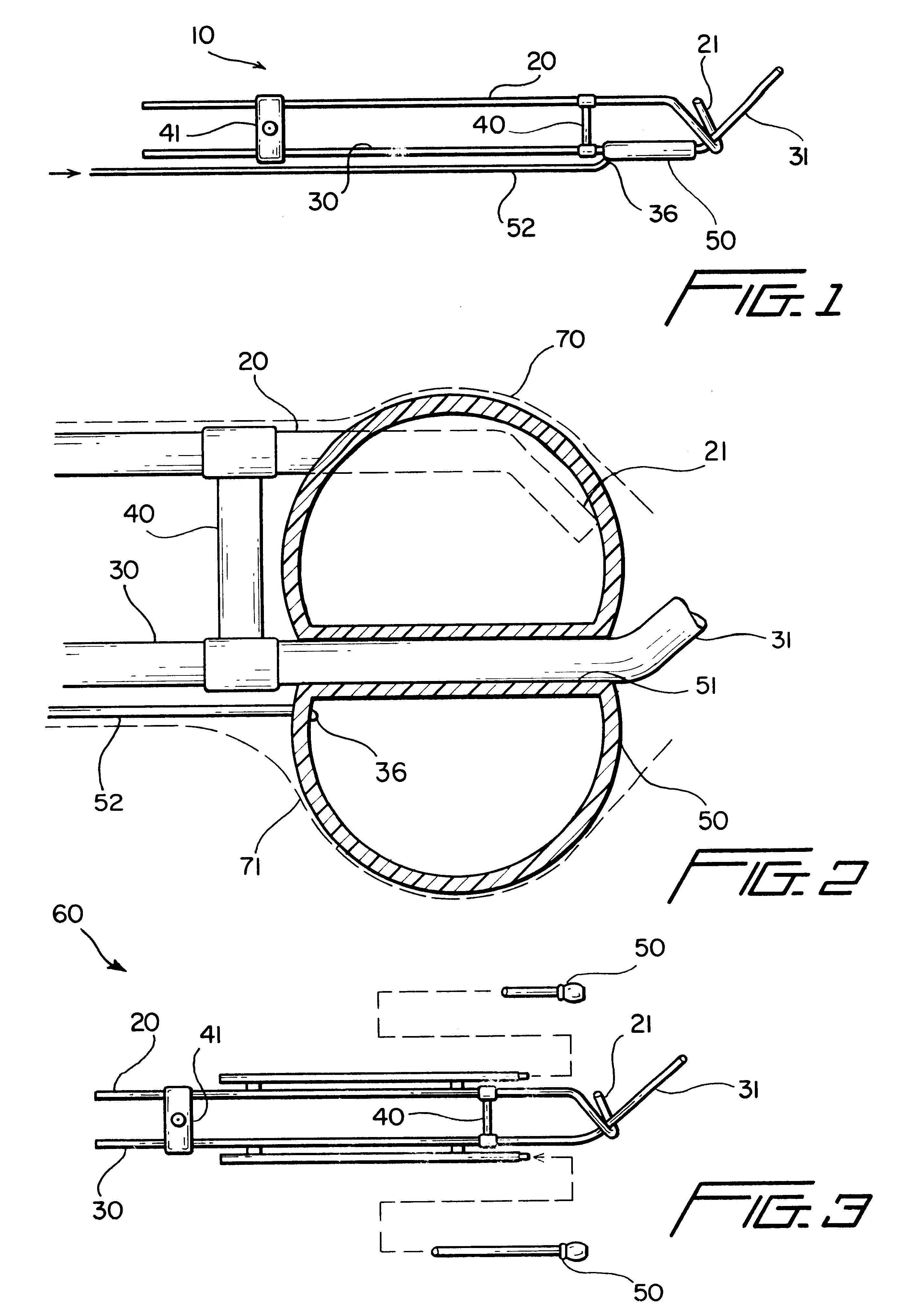Cervical applicator for high dose radiation brachytherapy
a cervical applicator and high-dose radiation technology, applied in radiation therapy, other medical devices, therapy, etc., can solve the problems of hybrid treatment, inconvenient patient care, and inability to meet patient needs, so as to improve the efficiency of treatment and reduce the risk of complications
- Summary
- Abstract
- Description
- Claims
- Application Information
AI Technical Summary
Benefits of technology
Problems solved by technology
Method used
Image
Examples
Embodiment Construction
Two embodiments of a Fletcher-Suit type cervical applicator according to the present invention are now described making reference to the accompanying drawings. FIGS. 1 and 2 illustrate a first embodiment of a cervical applicator 10 and FIG. 3 represents an alternative embodiment, applicator 60. The applicator 10 of FIG. 1 comprises, as its major components intravaginal tube 20, a distal, angled cervix ring 21, a hollow, transvaginal-intracervical tube 30 including a intracervical projection portion 31, a bridge 40, a bridge 41, an inflatable balloon 50, and a fluid channel tube 52.
In more detail, the colpastat-intravaginal tube 20 is formed from an appropriate rigid, medical grade material such as surgical stainless steel, titanium, carbonate polymers, or other suitable materials providing adequate strength, rigidity, and sterilizable surfaces. The tube 20, preferably having a circular cross-section, may be solid or hollow. In the hollow form, the tube 20 effectively, qualifies as a...
PUM
 Login to View More
Login to View More Abstract
Description
Claims
Application Information
 Login to View More
Login to View More - R&D
- Intellectual Property
- Life Sciences
- Materials
- Tech Scout
- Unparalleled Data Quality
- Higher Quality Content
- 60% Fewer Hallucinations
Browse by: Latest US Patents, China's latest patents, Technical Efficacy Thesaurus, Application Domain, Technology Topic, Popular Technical Reports.
© 2025 PatSnap. All rights reserved.Legal|Privacy policy|Modern Slavery Act Transparency Statement|Sitemap|About US| Contact US: help@patsnap.com


